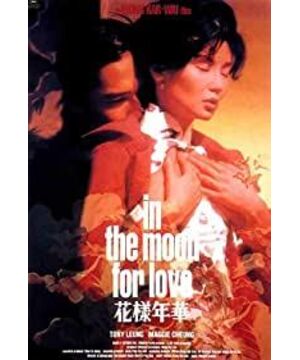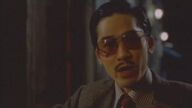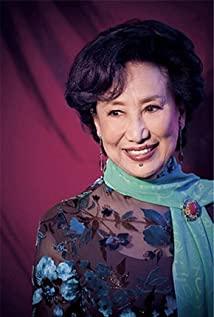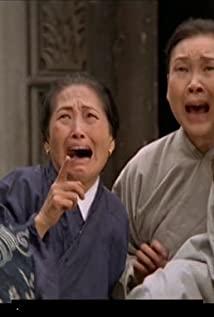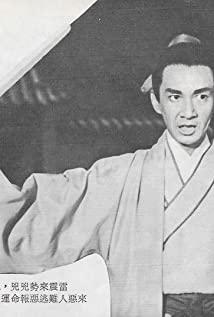Wong Kar Wai's World Entrance: https://virtual.filmlinc.org/page/world-of-wong-kar-wai/
The 4K restoration version was refreshed in October and yesterday. The viewing experience of the two new versions is different from before, not only the changes caused by the color difference, but also the emotions triggered by my current state of mind and the materials I found in the film. relation.
Like eating, the scenes that are particularly common in the film play a crucial role.
Note: The time of the movie in this article is based on the CC Blu-ray version released before, which is slightly different from the time of the repaired version. The screenshot is also a screenshot of the CC Blu-ray version suppressed resource, which is quite different from the 4K repair version.
1. Make noodles
This scene appears in 8 minutes of the film. Mrs. Sun, played by Pan Dihua, asked Mrs. Su why they didn't eat hoof soup together.
This is the fourth conversation between Mrs. Sun and Mrs. Su in the film. Mrs. Su has lived in for a while, and she is so polite with Mrs. Sun, like an outsider. Thinking of the mahjong card scene in the famous episode of the film about 5 minutes ago, Mr. Zhou and Mrs. Su both kept their distance from other elderly people in the guest room. They are both from Shanghai, and at the end of the first meeting in the film, it is revealed that one speaks Cantonese mixed with Shanghainese, and the other is pure Cantonese, just like the distance between them, looking at each other and unable to get close to each other.
Whether it is noodles or hoof soup, the distance from eating here has deepened the unique sense of distance in the film. This kind of distance pervades the entire work, including the narrative technique and method of the film, which creates a distance from the audience, including those watching in the theater, who are separated from the screen. This distance is not just space, it is stronger than space. ( That famous ferry ticket is not a ferry ticket, but at this moment, I and you cannot be together )
Summary of the premise: Mr. Zhou quarreled with his wife, his wife left work early, and Mr. Zhou arrived at the unit late, listening to his wife and colleagues saying that you should not wait stupidly.
The famous face-to-face encounter, including the second face-to-face rain, I don't think there's much to say. Why does Mrs. Su choose to eat noodles alone and is unwilling to eat with them? I think there is still the influence of foreigners who are temporarily unable to follow the customs of the countryside, and their living habits cannot be changed for the time being. It takes time to adapt and accept. Punching noodles is an action, but also a habit, and it can even be said to be an entrance.
If we say that the previous mahjong game, as well as rice cookers, newspapers, and martial arts novels are all materials that are close to each other, or that it is a step to imitate others (actual) into private (ideal), then the design of playing noodles can It is correct to say that it is right to use the approach of meeting each other at a very close distance in space to enter an accelerated stage of development.
Here is a detail. Mrs. Su, who beat the noodles, used a thermos cup to hold meals, and Mr. Zhou, who ate the noodles, used a newspaper tucked under his arm. If, mahjong implies male social activities, rice cooker implies female social activities. Well, when the newspaper appeared, it was Mrs. Su who read it and talked with Mr. Zhou; when the martial arts novel appeared, it was presented by Mrs. Su, who talked with the absent Mr. Zhou; when the rice cooker appeared, it was Mr. Zhou who asked and talked with the absent Mrs. Su. , When the magazine publication appeared, it was Mr. Zhou who came over to talk to Mr. and Mrs. Zhou who was not there. Everyone can taste the taste carefully.
2. Restaurant
Watch out for the smoke here.
Music: Aqueellos Ojos Verdes
At the beginning of this part, I marked that there was smoke there, and the picture below I cut out the cigarette, and the lighter still lit several times before it ignited.
Men smoke to relax. This is easy to understand. But when this cigarette appears in the front, why is it smoking in the back? Is this conversation the beginning of their appointment to have dinner at the restaurant or has been chatting for a long time, at least one cigarette has been smoked, what is the meaning of the nervousness of the lighter? I really don't understand Zhang Shuping's arrangement of materials. However, this arrangement makes the material deteriorate and makes the material more interpretable.
The above explanation is the same as this conversation. Mr. Zhou asked Mrs. Su how to buy the bag, and Mrs. Su asked Mr. Zhou how to buy the tie. The deterioration of the objects on the body has turned into a trait of liking each other. I think that Mr. Chen and Mrs. Zhou have always been faceless in the film. The other person found that they could rely on each other's characteristics, cognition triggers familiar feeling, feeling triggers each other's actions, and the action enhances the stimulation of the trait to the feeling. After a series of strengthening, they complete each other's love.
Music: Aqueellos Ojos Verdes
Second time at the restaurant. The beginning is slightly different from the first time above, but there is no difference.
This reminds me of Hong Changxiu's "Right Now, Wrong Then". The same scene becomes two arrangements. The exchange remains the same, just from bags and ties to eating the dishes that each other's partner often eats. The panning close-up meal of the seasoning, the action of their meal and the action of eating, use the action to complete an emotional staged display.
In the first picture above, the lines appear before the pan and pull the camera; in the second picture above, the lines appear after the pan, and Mrs. Su completes a mouth-wiping action. They are all equipped with very tentative lines, and this kind of pause is hard to come by.
3. Eat
Premise summary: The relationship is deadlocked.
Pay attention to the movements of the two to eat, especially the movements of the chopsticks to sandwich the rice and vegetables.
Pay attention to the movements of the two of them eating, especially the movements of the chopsticks to sandwich the rice and vegetables, and the state of the two of them in two scenes.
4. Rice cooker
This picture is from the 62-minute segment of the film. Mrs. Su started cooking with a rice cooker instead of making noodles.
This picture is from the 74-minute segment of the film, the song "Love in the Mood", with a pan and swing camera to draw the gap and distance between the two.
In fact, I didn't take pictures of other rice cookers before. Every time the kitchen section appears, someone deliberately blocks the rice cooker, or the rice cooker is always in a strange position on the screen. Also, the affair itself is in a strange position in their life trajectory, either being blocked or being placed, or else being awkward with each other. Recalling the scenes of the two of them in the film, the appearance of the characters and the trajectory of the camera swing are very, very strange. It seems that they want to create a happy dream, and they seem to want to break through the dreamy fantasy.
end
Wong Kar-wai's beauty, I don't think it comes from the aesthetics of the camera lens, is the extraction of ordinary materials from life that can radiate emotions. He uses his own special processing method to inject magic power, and borrows our viewers' own life experience and cognitive means. Use the material nodes that trigger the emotional switch in the audience's brain to open the state of blending with the movie.
He has been capturing the pain in the meaning of life. Only when he feels the pain is the result of his true devotion. Pain may be one of the end results of a relationship, and love has always been so elusive and elusive in the king's world. Maybe the real end of the story can only be reached when pain develops?
(too lazy to check for typos, I'm really lazy)
View more about In the Mood for Love reviews


